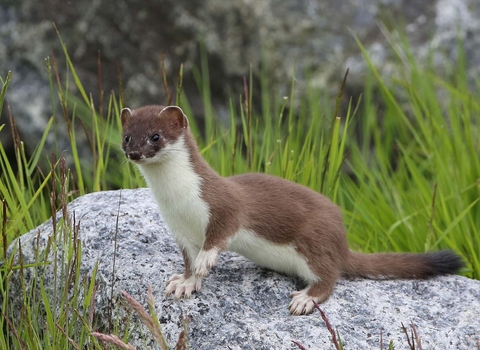
Stoat © Margaret Holland

©Richard Steel/2020VISION
Stoat
The stoat is a small mustelid, related to the weasel and otter. It has an orange body, black-tipped tail and distinctive bounding gait. Spot it on grassland, heaths and in woodlands across the UK.
